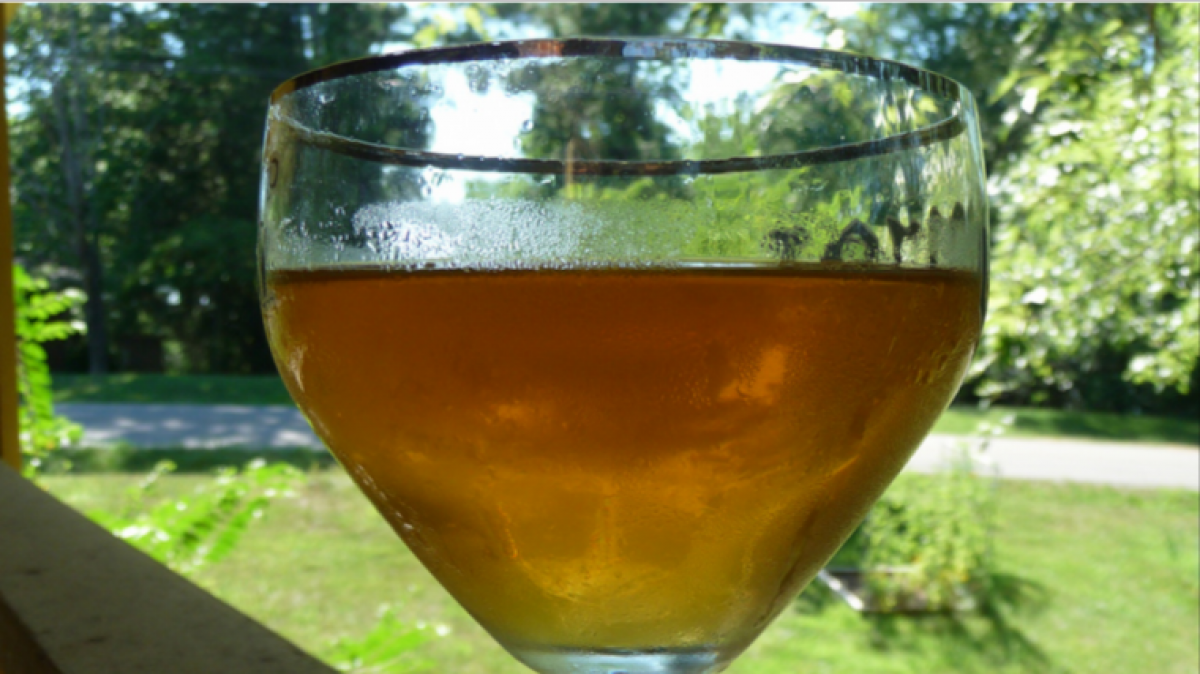
Healthy Way Mag aims to explain the definition of mead, explore its history, and relation to the Norse mythology (and with Valhalla in particular), as well as offer an easy-to-make mead recipe.
What is mead: History and origin
Mead is an alcoholic beverage created by fermenting honey with water, sometimes with various fruits, spices, and grains. The main characteristic of this alcoholic drink is the fact that all the fermentable sugar is derived from honey and it can be still, carbonated, dry, semi-sweet, or sweet.
The English term mead – "fermented honey drink" – derives from the Old English meodu or medu, and Proto-Germanic meduz. The name has connections to Old Norse mjöðr, Middle Dutch mede, and Old High German metu, among others. Mead was literally everywhere in the olden days. It is considered the oldest of alcohols and its origins lead back to China’s Henan province in 7 B.C. The ancient records tell the story of rain falling into a pot of honey and thus creating mead.
Ancient cultures all over the world enjoyed this drink at some point in history, and there are references to it in the Bible, in Chaucer’s poems, and Aristotle’s writings. This honey-based drink is the source of the term “honeymoon” as it was overflowing at weddings and newlyweds used to drink it for a moon (i.e., month) after their wedding ceremony, hoping that a child would be born nine months later. Ireland still maintains the tradition of giving newlyweds a bottle of mead before they set off for their honeymoon. Currently, mead is making a global comeback, with more than 300 meaderies in the United States and even more across Europe.
Health benefits of mead
Mead, also known as the drink of the gods, is a highly nutritional drink with enzymatic properties which can be served as a tonic or to improve digestion. Honey is a product with high amounts of sugar, (80%) which prevents microorganisms from developing as long as its water content is lower than 18-20%. Anything above this value will result in natural fermentation of the honey.
Although not fully supported by medical evidence, most recent health reports related to drinking mead are focused on the honey from which the drink is made and the probiotic content it’s presumed to have as a result of the fermentation process.
Types of mead: Composition and strength
There are many types of mead available on the market, and many of them have fruit, spices, and nuts as ingredients although the classic recipe only contains three components: honey, water, and yeast.
Mead drinks are named depending on how you make them and what you add to them. Typically, if you add fruit to the mead, then you are making a melomel, which applies to any mead made with fruit. From lightest to strongest, we have listed below six types of meads:
- Hydromel - 3.5% to 7.5% alcohol
- Session Mead - under 10% alcohol
- Standard Mead - 7.5% to 14% alcohol
- Sack Mead (or Great Mead) 14% to 18% alcohol
- Dessert Honey Wines - very sweet and 14% - 22% alcohol
- Fortified Mead - also known as Honey Liqueurs can go as high as 60% alcohol
Mead, Vikings, and Valhalla
For the Vikings, meade was King Odin's drink of choice, and many Nordic legends praise the properties of this liquor and talk about its role in celebrations in the afterlife in Valhalla. Chosen by Odin, half of those who died in combat traveled to Valhalla upon death and spent their eternity in this majestic hall drinking mead.
The importance of mead in Norse mythology is connected to a poem - the Poetic Mead, Mead of poetry, which tells the story of a mythical beverage that whoever "drinks becomes a scholar" and can recite any information and solve any question. The drink is also believed to have contained ergot fungi, a fungus which grows on rye, and has hallucinogenic properties (due to lysergic acid).
Step by step mead recipe
If you've ever wondered how to make mead, then you've come to the right place as we have a simple method that will allow you to enjoy this honey-based drink at home. You will need the following:
- 1 ½ l water
- ½ Kg pure honey
- 1 gr yeast
1. Warm the honey
The first step is to warm up the honey until it reaches a liquid consistency and then remove any potential impurities. These are usually pollen residue, which happens with pure honey.
2. Warm the water
Warm up the water in a brew pot and slowly add the liquified honey, stirring continuously. The goal is to mix until a light and homogenous mass is obtained.
3. Let cool
When the mead reaches its boiling point remove from fire and let cool. Typically, some foam may form at the top of the pot which you can be removed depending on preference.

4. Add yeast
The following step is just as simple - pour the result in a glass or plastic bottle and add the yeast, the final ingredient in our medieval honey-based concoction.
5. Eliminate fermentation gases
To eliminate fermentation gasses, you need to insert a tube in the mead bottle and place its other end inside another container that contains a little water, this way you should get rid of the CO2 generated. For ideal results, use a carboy bung or put a cork in each bottle and then make a hole in them so that when you insert the food grade tube air doesn't escape.
6. Leave rest
Once we have our mead ready, we need to change the container it's in and leave it to rest for three weeks.
7. Strain
Finally, after this period, strain the resulted mead to remove any unwanted impurities from the bottom of the bottle and enjoy!
Where to buy mead?
As mentioned earlier, this historic beverage has seen an extraordinary comeback due to popular TV shows and has become a real trend in itself. Most of the times, we will not have the means, or the time, to brew this honey-based drink at home so, the best option is to buy it from a specialized shop or a meadery.
Check out the original article: Hidromiel: propiedades, relación con los vikingos y receta at viviendolasalud.com
References:
Carmona, M., Zalcain, A., Alonso, G. L., & Salinas, M. R. (2002). La hidromiel y el vino, comparación de los aromas producidos durante su envejecimiento. Revista de la Escuela Universitaria de Magisterio de Albacete, 17: 281-290.
Kalif, W., (2006) The Comprehensive guide to types of Mead, http://www.stormthecastle.com/mead/articles/the-comprehensive-guide-to-types-and-names-of-mead.htm

